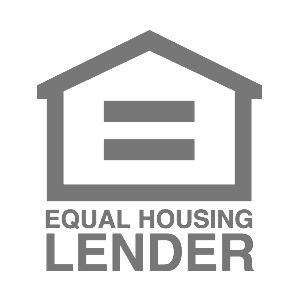
Like any type of loan, it’s important to know the pros and cons of a HELOC to figure out if it’s the best fit for your needs. We’ve answered some of the most common questions about home equity lines of credit here.
Top 5 HELOC Questions
1. How does a HELOC work?
A home equity line of credit, or HELOC, lets you borrow money against the equity you’ve built in your home. It’s a form of revolving debt, meaning it basically works like a credit card, allowing you to borrow money as needed–except the money is coming from your home’s equity. You can borrow up to a certain limit (set by your lender) and then pay it back over time with interest.
HELOCs are popular because they often have lower interest rates than other types of loans. But in exchange for that lower rate, your home acts as collateral. This means your home is on the line if you don’t pay back what you owe on your loan. A loan with collateral like this is known as a secured loan–while unsecured loans, like personal loans, don’t require collateral.
A HELOC is a good idea if you’re confident in your long-term ability to pay back the principal and interest on the HELOC. If you plan on living in your home for many years, or if you plan to make renovations and improve the living conditions of your home, a HELOC may also be a great choice for you. Of course, it’s important to talk to your lender about your loan options so you can make an informed decision for your future. Learn more about HELOCs and how they work here.
2. How does a HELOC affect your credit score?
Since a HELOC is an open credit line, it usually shows up on a credit report in the same way a credit card would, rather than a second mortgage. A HELOC can directly affect your credit score, considering it practically looks and acts like a credit card in your credit report.
If you are borrowing a large amount at once, it may be categorized as high risk, which may negatively impact your credit score. However, you can also use your HELOC loan to pay off other credit card balances, that way you only have one balance to manage. Having multiple lines of credit or excessive debt can also negatively impact your score.
However, if you use your credit in a strategic way, it can benefit your credit score and serve as a positive impact on your financial records. If you are paying down your HELOC on time and making smart borrowing decisions, your credit score should improve.
3. Do you need a home appraisal to get a HELOC?
Usually, no–you don’t need a home appraisal to get a HELOC. Although in order to provide a HELOC, lenders must determine the value of your home to set the HELOC limit. There are many ways to do this that don’t require a full home appraisal. This can be as easy as a drive-by from an appraiser or accessing the most recent public record data on your home’s value. Talk to your lender about what type of home evaluation is needed in order to secure a HELOC.
4. Can you pay off a HELOC early?
Yes, you can pay off a HELOC early. However, there are important notes to be aware of. There are two payment periods in a HELOC agreement: the draw period and the repayment period. The draw period is set by your lender and usually lasts about 10 to 15 years. This is the time frame in which you are actively borrowing. Typically, you are only required to pay off the interest of your HELOC during the draw period.
When the draw period ends, you enter the repayment period, where you pay back both the interest and the principal on your HELOC. Don’t forget that HELOCs usually have variable interest rates, meaning the interest rate fluctuates over time so it won’t always be the same.
If you would like to pay off your HELOC early, talk to your lender first. Sometimes there are prepayment penalties for paying your loan off early, like in the first 3 or 5 years of the repayment period. It can be an unexpected charge if you are in the process of moving or refinancing. Usually, you won’t face a penalty for contributing a small amount above your required monthly payment, so that may be a better route than paying off larger chunks at a specific time. Talk to your lender to discuss your options as each case is different.
5. Is a HELOC tax deductible?
The Tax Cut and Job Act of 2017 brought upon new rules about tax deductions, including HELOCs. The most important thing to know is that homeowners might be able to deduct interest on HELOCs (and home equity loans).
Basically, if you use your HELOC or HEloan funds for certain purposes, your interest might be tax-deductible. Consult your tax professional for more information.
Find out more about the next steps in applying for a HELOC here.
Eligibility for a home equity loan or HELOC up to the maximum amount shown depends on the information provided in the home equity application. Depending on the lender, loans above $250,000 may require an in-home appraisal and title insurance. Depending on the lender, HELOC borrowers must take an initial draw of the greater of $50,000 or 50% of the total line amount at closing, except in Texas, where the minimum initial draw at closing is $60,000; subsequent HELOC draws are prohibited during the first 90 days following closing; after the first 90 days following closing, subsequent HELOC draws must be $1,000, or more, except in Texas, where the minimum subsequent draw amount is $4,000.
The amount of time it takes to get funds varies. It is measured from the time the lender receives all documents requested from the applicant and depends on the time it takes to verify information provided in the application. The time period calculation to get funds is based on the first 4 months of 2023 loan fundings, assumes the funds are wired, excludes weekends, and excludes the government-mandated disclosure waiting period.
For Texas home equity products through Prosper, funds cannot be used to pay (in part or in full) non-homestead debt at account opening.
Depending on the lender, qualified home equity applicants may borrow up to 80% – 95% of their primary home’s value and up to 80% – 90% of the value of a second home. In Texas, qualified applicants may borrow up to 80% of their home’s value. HELoan applicants may borrow up to 85% of the value of an investment property (not available for HELOCs).
Home equity products through Prosper may not be available in all states.
All home equity products are underwritten and issued by Prosper’s Lending Partners. Please see your agreement for details.
Prosper Marketplace, Inc. NMLS# 111473
Licensing & Disclosures | NMLS Consumer Access


